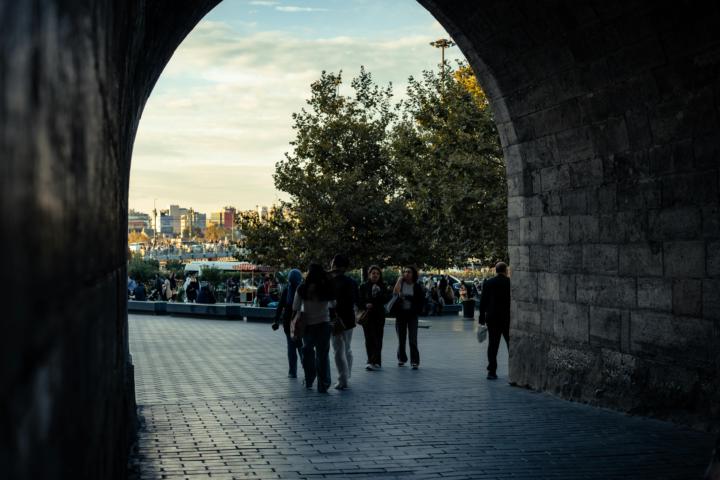
Write something
The Complete Bug Out Bag Guide: Multiple Day Survival Set-Up from a Former SERE Specialist
The Complete Bug Out Bag Guide: Multiple Day Survival Set-Up from a Former SERE Specialist Statistically, the odds of actually having to bug out are very low. But if you ever do, you want to make sure you have the right mindset, the right skill set, and the right tool set to maximize your survivability. In this comprehensive guide, I'll break down the complete Bug Out Bag (BOB) system I've torture-tested through years of survival, evasion, resistance, and escape (SERE) training in the US Air Force. This is gear I've taken into the field, tested through multiple biomes, environments, and conditions time and time again. This isn't theoretical. This is what works. ________________________________________ What is a Bug Out Bag? A Bug Out Bag (BOB) is your 72-hour complete self-sufficiency system designed for when you can't return home for at least 3 days—or possibly much longer. When You Need a BOB: ✅ Natural disaster requiring evacuation ✅ Civil unrest forcing relocation ✅ Infrastructure collapse ✅ Long-term emergency displacement ✅ Any scenario where home is not accessible for 3+ days ✅ Especially when “Home” is not an option (otherwise see Get Home Bag Article) Key Characteristics: • Weight: 25-35 lbs base (before water and food) • Duration: Up to 7+ days • Purpose: Complete independence from home base or support infrastructure • Mobility: Designed for extended foot travel if necessary ________________________________________ BOB vs. Other Go Bags: Understanding the Difference Before we dive into gear, let's clarify how a Bug Out Bag differs from other emergency kits: WUSH Bag (0-30 minutes) • Weight: 3-4 lbs • Purpose: Immediate escape from imminent danger • Contents: Minimal EDC essentials Get Home Bag (24 hours) • Weight: 10-15 lbs • Purpose: Get from work/travel back to home • Contents: Basic survival for urban/suburban travel Bug Out Bag (72+ hours) • Weight: 25-35 lbs • Purpose: Extended survival away from home • Contents: Complete self-sufficiency system
2
0
The Get Home Bag: A SERE Instructor's Framework for Urban Survival
By Michael Caughran, Former USAF SERE Specialist After years of teaching survival, evasion, resistance, and escape to military personnel, and now training executives and high-net-worth individuals through Grey Man Academy, I've learned that survival preparation isn't about having the most gear—it's about having the right gear organized around proven principles along with the skills and will to use it when it matters most. The get home bag represents one of the most practical applications of survival planning for everyday life, yet it's often misunderstood or over-complicated. Defining the Mission: What Is a Get Home Bag? The purpose is right there in the name—this is your lifeline to get back to friendly control when chaos erupts. Unlike a bug-out bag designed for extended displacement or an INCH (I'm Never Coming Home) bag for permanent relocation, the get home bag serves a specific 24-72 hour mission: navigate through urban chaos, natural disasters, or civil unrest to reach your home, family, or designated safe location. Throughout my military career and now in private sector training, I've witnessed how quickly normal situations can deteriorate. A routine business trip becomes a survival scenario when targeted by a criminal element. Your daily commute transforms into a multi-day trek when transportation systems collapse under the weight of natural disasters. The get home bag bridges that critical gap between everyday carry items and full survival loadouts. The key principle I emphasize to my students is mobility. In the military, we had a saying: "Mobility is life." Every piece of gear must earn its place through utility-to-weight ratio. If you're weighed down like a pack mule, you've already failed the mission. Speed and adaptability trump having every possible contingency covered. The Five Basic Survival Needs Framework One of the many great frameworks that I've continued to refine are the Basic Survival Needs, five essential categories: Communications, Health, Personal Protection, Sustenance, and Travel. This framework ensures comprehensive preparation without redundancy or critical gaps.
2
0
WUSH BAG ARTICLE - Complete EDC Gear Breakdown
The Complete WUSH Bag Guide: Essential EDC Gear for Immediate Emergency Escape https://www.youtube.com/watch?v=tFo3DjGfzhA When you have mere seconds to escape a surprising threat, your WUSH bag could be the difference between life and death. Whether you're facing a house fire, civil unrest, or any scenario requiring rapid evacuation, having your essential gear staged and ready can save your life. In this comprehensive guide, I'll break down every item in my personal WUSH bag setup—covering both domestic carry and international travel modifications. This is the same system I've used and refined over years after training thousands of individuals and taking many military courses around this kind of topic. What is a WUSH Bag? WUSH stands for "Wake Up, Shit's Happening." This is your minimalist emergency escape kit designed for immediate deployment when you have zero time to think and need to move now. Key Characteristics: - Weight: under 10 lbs total - Duration: immediate escape capability for limited durations - Size: Small sling pack or large fanny pack - Purpose: Get yourself and loved ones out of immediate danger and to the next safe location Think of it as your "grab-and-go" insurance policy. Everything you need to survive the first critical minutes of an emergency, all staged in one compact package. When You Need a WUSH Bag: ✅ House fire breaking out✅ Unexpected civil unrest in your neighborhood✅ Natural disaster requiring immediate evacuation ✅ Wizard of Oz flying monkeys attacking✅ Basically any scenario where movement equals life…not now, but RIGHT NOW! WUSH Bag Philosophy: Movement is Life The core principle behind the WUSH bag is simple: In emergency situations, movement is life. Standing still, hesitating, or trying to gather items costs precious seconds you don't have. Your WUSH bag eliminates decision paralysis by having everything pre-staged and ready to grab. Whether it's: - Your house burning down around you - A serious threat developing outside - An emergency requiring immediate relocation - Any time-sensitive crisis situation
Critical Entry and Escape Skills for International Business Operations in High-Risk Environments
The Reality You're Not Being Told Between 15,000 and 20,000 kidnappings, detentions, and extortions of international travelers occur globally each year—and that's only the 35% that get reported. The actual numbers are significantly higher, with roughly half of all kidnappings never making it into official statistics. For businessmen operating in emerging markets across Latin America, Africa, the Middle East, and Asia, the number of U.S. citizens traveling to these volatile regions has grown 47% since 2000, reaching 12 million annually—making you a statistical target, not an exception. If you're traveling to countries like Pakistan (15,000+ kidnappings annually), Nigeria (1,000+ per year), Mexico (17,889 according to Mexican NGO data), or Venezuela, you need more than situational awareness and a low profile. You need actionable skills that work when prevention fails—when you're locked in a room, when someone you care about is trapped, or when seconds determine whether you escape or become a statistic. What You'll Learn This article provides field-tested tactical skills adapted from Pat Watson's Tactical Lock Picking methodology—distilled specifically for grey man operators conducting business in hostile environments. These aren't hobbyist techniques; they're survival skills drawn from over a decade of military special operations, federal law enforcement, and counter-piracy operations. Key Capabilities You'll Acquire: - Systematic threat assessment for locked obstacles in emergency scenarios - Non-destructive entry methods to reach trapped colleagues or family members - Field-expedient escape techniques for hostage situations - Gear organization strategy for international travel without raising red flags - Low-tech solutions that work without specialized tools - Security vulnerability assessment to protect yourself and your assets abroad The Tactical Reality: Why This Matters Now The Business Traveler Target Profile Business executives face unique threats due to their visibility, value, and influence, making them prime targets for kidnapping-for-ransom operations, particularly in regions where organized crime and militant groups operate with impunity. You're not just another tourist—you represent capital, connections, and leverage.
2
0

Surveillance Detection Routes: A Security Guide for Business Travelers and Executives
30,000+ annual kidnappings worldwide target business travelers, SDR could drastically reduce your chances of being effectively targeted. Quick Overview: This comprehensive guide to counter-surveillance and personal security covers, - What SDRs Are: Pre-planned routes using security tradecraft to detect hostile surveillance and stalking - Core Techniques: Choke points, cover stops, route variation, and the 90-degree break for effective surveillance detection - Threat Recognition: How to identify behavioral indicators of hostile surveillance and tracking attempts - Practical Planning: Step-by-step protocols for building and executing surveillance detection routes - Travel Security: Airport-to-hotel procedures, hotel security measures, and risk mitigation strategies - Emergency Response: What to do when surveillance is confirmed and how to contact authorities - Skill Building: Progressive training methods for developing situational awareness and threat assessment capabilities Who This Guide Is For: Corporate executives, international business travelers, security professionals, high-net-worth individuals, diplomats, journalists in hostile environments, missionaries, and anyone requiring enhanced personal security and executive protection. Executive Summary In an increasingly interconnected world, business executives and international travelers face growing security risks ranging from kidnapping and robbery to corporate espionage and targeted surveillance. More than 30,000 kidnappings occur globally each year, with business travelers being prime targets. A Surveillance Detection Route (SDR) is a proven defensive security technique and counter-surveillance measure that enables individuals to detect if they're being followed or watched, providing crucial early warning before a threat materializes. Bottom Line: Learning and implementing basic SDR techniques can significantly reduce your risk of becoming a victim of crime, kidnapping, or corporate espionage while traveling. This guide will teach you how.
2
0

1-16 of 16
powered by

skool.com/grey-man-academy-3923
Tradecraft, international travel safety hacks, digital security and all things Grey Man are discussed and promoted.
Suggested communities
Powered by
